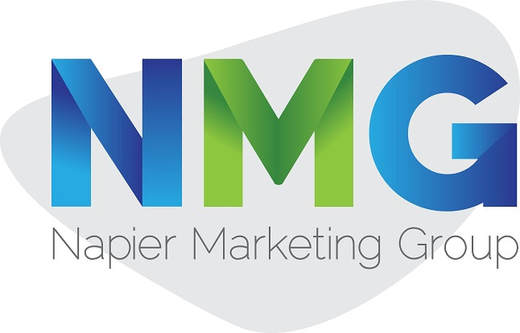Bridging Communication Gaps: The Evolution of Direct Routing
Communication is the backbone of modern-day business operations. It is the glue that holds teams and departments together, and a lack of it can result in costly mistakes and misunderstandings. Communication gaps can manifest in various forms, but luckily, technological advancements have made it easier to bridge these gaps. One such technology is Direct Routing, which enables businesses to leverage their existing phone systems to make and receive calls through Microsoft Teams. In this article, we'll look at how Direct Routing has evolved to become a critical component of modern communication systems and how businesses of all sizes can benefit from it.
Unveiling the Potential of Microsoft Teams Direct Routing
In recent years, businesses have become increasingly reliant on virtual communication tools, with Microsoft Teams being one of the most popular options available. However, while Teams offers a range of features that can facilitate remote collaboration and communication, it was designed to function as something other than a fully-fledged phone system. This is where Microsoft Teams Direct Routing comes in. By enabling businesses to connect their existing phone systems to Teams, Direct Routing provides a unified platform that allows for seamless communication regardless of location or device.
The benefits of Direct Routing are numerous, including the ability to reduce costs associated with traditional phone systems and simplify the management of communication resources. Moreover, businesses can streamline their operations and enhance productivity by integrating phone and messaging capabilities onto a single platform. As Direct Routing continues to evolve, we can expect to see even more advanced features and functionalities designed to further strengthen communication and collaboration within organizations. Ultimately, the potential of this technology is vast, and it will play a critical role in bridging communication gaps and empowering businesses to operate more efficiently in a world increasingly defined by remote work.
The Journey of Digital Transformation: Traditional to Modern Routing
Over the years, businesses have undergone a digital transformation from traditional routing to modern routing. The traditional routing system relied on a Public Switched Telephone Network (PSTN), which is a circuit-switched network used to make telephone calls. However, with the advent of technology, the traditional method seemed outdated and needed more efficiency and flexibility to keep up with modern-day business operations.
As businesses became more digitally inclined, they began to implement modern routing technologies like Session Initiation Protocol (SIP) trunking and Direct Routing. Direct Routing, in particular, has gained popularity among businesses due to its ability to integrate easily with cloud-based communication systems like Microsoft Teams. It enables businesses to leverage their existing phone systems and make and receive calls through Teams, which improves communication and productivity.
In conclusion, the digital transformation journey from traditional routing to modern routing has been remarkable and in line with the ever-changing technological landscape. By embracing digital transformation, businesses can improve communication systems and bridge communication gaps, enhancing collaboration and productivity. Direct Routing is undoubtedly a critical component of modern communication systems, and its continued evolution is essential in keeping businesses connected.
The Rising Influence of Advanced Digital Connectivity
The rising influence of advanced digital connectivity is transforming the way businesses communicate and collaborate. With Direct Routing, companies can seamlessly integrate their phone systems with Microsoft Teams, allowing greater flexibility, mobility, and productivity. This advanced connectivity solution has revolutionized the traditional approach to communication, making it possible for teams to work together from anywhere in the world.
Moreover, Direct Routing has brought significant cost savings to businesses while improving the customer experience. It enables businesses to use a single platform for all communication needs, eliminating the need for separate communications channels. This unified approach to communication fosters a consistent and streamlined customer experience, improving customer satisfaction. With advanced digital connectivity, businesses can now communicate faster, more efficiently, and more effectively than ever before, providing them with a competitive edge in today's fast-paced business environment.
Unveiling the Potential of Microsoft Teams Direct Routing
In recent years, businesses have become increasingly reliant on virtual communication tools, with Microsoft Teams being one of the most popular options available. However, while Teams offers a range of features that can facilitate remote collaboration and communication, it was designed to function as something other than a fully-fledged phone system. This is where Microsoft Teams Direct Routing comes in. By enabling businesses to connect their existing phone systems to Teams, Direct Routing provides a unified platform that allows for seamless communication regardless of location or device.
The benefits of Direct Routing are numerous, including the ability to reduce costs associated with traditional phone systems and simplify the management of communication resources. Moreover, businesses can streamline their operations and enhance productivity by integrating phone and messaging capabilities onto a single platform. As Direct Routing continues to evolve, we can expect to see even more advanced features and functionalities designed to further strengthen communication and collaboration within organizations. Ultimately, the potential of this technology is vast, and it will play a critical role in bridging communication gaps and empowering businesses to operate more efficiently in a world increasingly defined by remote work.
The Journey of Digital Transformation: Traditional to Modern Routing
Over the years, businesses have undergone a digital transformation from traditional routing to modern routing. The traditional routing system relied on a Public Switched Telephone Network (PSTN), which is a circuit-switched network used to make telephone calls. However, with the advent of technology, the traditional method seemed outdated and needed more efficiency and flexibility to keep up with modern-day business operations.
As businesses became more digitally inclined, they began to implement modern routing technologies like Session Initiation Protocol (SIP) trunking and Direct Routing. Direct Routing, in particular, has gained popularity among businesses due to its ability to integrate easily with cloud-based communication systems like Microsoft Teams. It enables businesses to leverage their existing phone systems and make and receive calls through Teams, which improves communication and productivity.
In conclusion, the digital transformation journey from traditional routing to modern routing has been remarkable and in line with the ever-changing technological landscape. By embracing digital transformation, businesses can improve communication systems and bridge communication gaps, enhancing collaboration and productivity. Direct Routing is undoubtedly a critical component of modern communication systems, and its continued evolution is essential in keeping businesses connected.
The Rising Influence of Advanced Digital Connectivity
The rising influence of advanced digital connectivity is transforming the way businesses communicate and collaborate. With Direct Routing, companies can seamlessly integrate their phone systems with Microsoft Teams, allowing greater flexibility, mobility, and productivity. This advanced connectivity solution has revolutionized the traditional approach to communication, making it possible for teams to work together from anywhere in the world.
Moreover, Direct Routing has brought significant cost savings to businesses while improving the customer experience. It enables businesses to use a single platform for all communication needs, eliminating the need for separate communications channels. This unified approach to communication fosters a consistent and streamlined customer experience, improving customer satisfaction. With advanced digital connectivity, businesses can now communicate faster, more efficiently, and more effectively than ever before, providing them with a competitive edge in today's fast-paced business environment.



